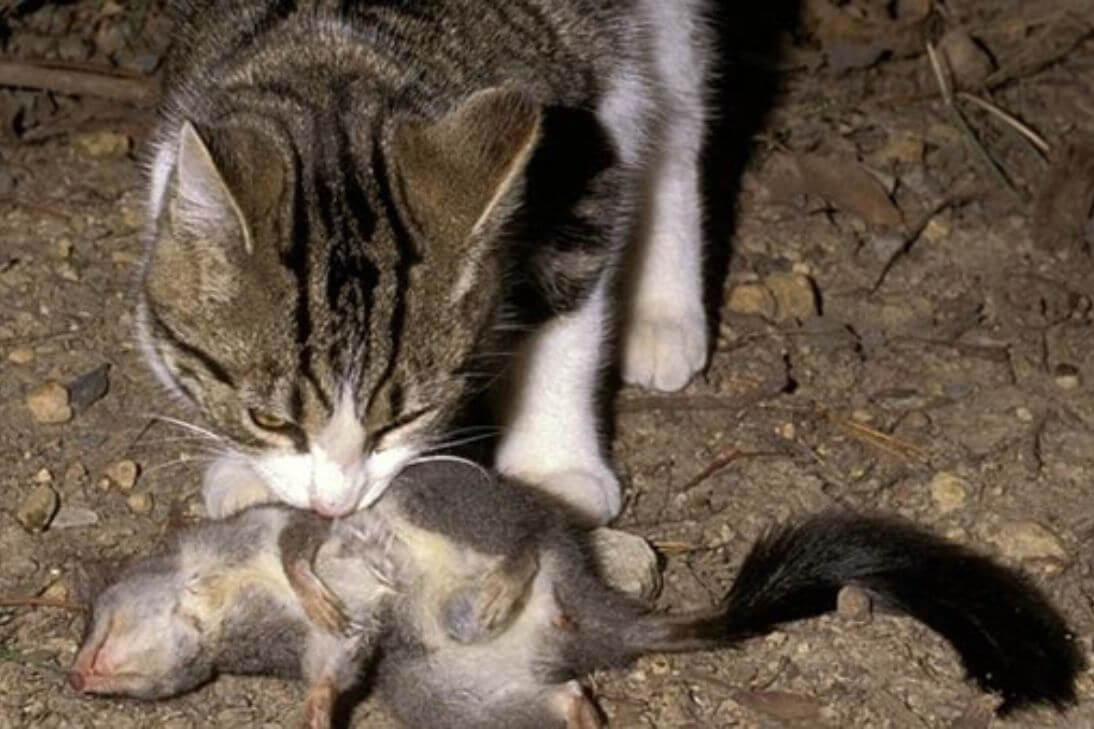Government Announces Plans To Manage Feral Cats
Government Announces Plans To Manage Feral Cats
10 September 2024
The Federal Government has recently announced a national action plan to combat feral cats. As part of the plan, that will be released later in 2024, the Government will invest more than $60 million in 55 projects across Australia.
Hunter Wildlife Rescue welcomes the announcement and we look forward to seeing plans put into action. We are not involved in the trap and abatement programs, however we do support a humane and respectful cat management program.
We understand this will be deeply polarising and upsetting to many people. After all, one third of Australian households own a pet cat. But whilst these pet cats can be much loved and valued members of the family, it is crucial that we understand and accept the devastating impact roaming cats are having on Australia’s biodiversity. As wildlife rescuers and rehabilitators, we come face to face with it on a daily basis.
In this article, we share our own facts and perspectives as well as those from credible sources such as the Invasive Species Council of Australia and wildlife ecologist and professor at Charles Darwin University Sarah Legge. Professor Legge is a leading researcher in the field and has worked with the federal government developing the plan.
So what is the problem?
Australia is a global biodiversity hotspot and one of just 17 megadiverse countries on the planet. However, we’re also a world leader in species extinction. Since colonisation we have lost about 100 native plants and animals to extinction and that is just what is on record. Now, almost 2000 native plants and animals are currently listed as threatened with extinction.
Whilst there are many threats contributing to this, declines are largely due to invasive species.
Why focus on cats?
Cats are just one threat to Australian wildlife. However, they are the most efficient and widespread killers of native fauna. Cats alone kill an estimated 2 billion animals in Australia every year. It’s understood that cats are primarily responsible for the extinction of at least 20 species of mammals. They roam the streets in our cities and suburbs and are known to inhabit every national park in every state across Australia.
Feral Cats
Feral cats can be cats that were previously domestic cats, either dumped, discarded or lost as well as well as cats that have been bred in the wild by other feral cats. Its estimated that there are between 2 million and 6 million feral cats in Australia. This number fluctuates from year to year depending on rainfall conditions across Australia. Feral cats are highly adaptable to different environments and now live in every habitat in Australia from the wettest rainforests through to the hottest deserts. They are very fast, agile and good climbers, making them effective hunters.
Domestic Cats
There is over 5 million pet cats in Australia. 4 out of 5 cats allowed outside will hunt and kill an average of 2-3 animals per week. Most cat owners won’t know how far their cats are roaming or the impact they are having as cats usually kill when out roaming and they don’t usually bring their kill back to their owner.
But also what many people don’t know is that a cat bite will release bacteria that acts as a poison in a possums bloodstream. Within around 8 hours, the possum starts experiencing paralysis and if left untreated will inevitably die. Cat owners often don’t know their cat has caused the death as its often very difficult to see a bite mark.
Why are cats more of a problem than native predators?
Native predators play an important role in biodiversity by keeping numbers under control. As an island, Australia’s native fauna species have evolved together over millennia, keeping the nature of balance. Cats have an ambush mode of hunting unlike that of native predators which makes smaller fauna particularly susceptible to them.
What measures are proposed?
The Federal Government will be releasing a plan later this year that primarily focuses on feral cat management.
Tanya Plibersek , Federal Environment Minister, is proposing 55 projects that rely on new technologies to catch and remove feral cats as safely, quickly and humanely as possible. The state and territory governments are also working together with the federal government on a feral cat abatement plan expected to start later in 2024.
Some of these measures include supported indigenous rangers with feral cat management and creating cat-free zones.
However, to manage the feral cat problem effectively, you also need to look at how pet cats are being managed as the pet cat population is a source that can enter into the feral cat population.
The Federal Government is proposing a nationwide cap on the number of pet cats a household is allowed to have varying from 2-4 across different areas. Its expected that curfews will also be imposed, meaning the cat will need to be contained either indoors or in a catio-type arrangement outdoors.
Limited time curfews such as keeping cats indoors at night don’t really work as it just switches around what cats are preying on. During the day they’ll go after more reptiles and birds at night more gliders, possums and nocturnal birds.
Tips For Responsible Cat Ownership
Keeping cats inside isn’t just for the protection of native animals. It prevents them from getting lost, hurt and or catching and spreading potential diseases. Cats can live very happily indoors, especially if you provide them with enough space, enrichments and stimulation.
There are plenty of ways you can set up a contained space in your home. Ideally cats would be kept indoors but if this is not possible, you look into outdoor cat runs, or place roller bars on your fences so cats can’t leave your property.
Desexing your cats means there won’t be the opportunity for any unwanted offspring.
If you can’t contain a cat then maybe you should consider whether a cat is the best pet for you.
More Information
ABC News Daily Podcast, The Plan to Lock Up Pet Cats, 6 September 2024
https://www.youtube.com/watch?v=T0EOkZ01-Ug
War on feral cats: report from the battlefield, 4 September 2024
https://minister.dcceew.gov.au/plibersek/media-releases/war-feral-cats-report-battlefield
Invasive Species Council of Australia, Ending Extinctions
https://invasives.org.au/our-work/ending-extinctions/#:~:text=Australia%20has%20lost%20about%20100,extinctions%20occurred%20since%20the%201960s.

